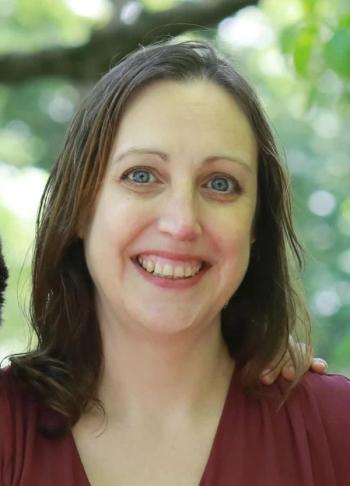
Using S.O.A.P. is good medicine
We all see these articles about what it takes to run a successful practice: slick marketing, conflict management, Web pages, team training, appropriate compensation packages, etc. The list is endless.
"You get the best out of others when you give the best of yourself."
—Harvey Firestone, founder of
Firestone Tire & Rubber Co.
We all see the articles about what it takes to run a successful practice: slick marketing, conflict management, Web pages, team training, appropriate compensation packages, etc. The list is endless.
Yet these topics are but condiments on a great hamburger. The substance of the hamburger is the patty. The substance of clinical medicine is a patient's assessment, diagnosis, treatment and plan. Do that well, and you will succeed. Do that poorly, and you must rely on the condiments for success.
The field of veterinary medicine has matured. Specifically, the days of easy money, easy practice start-ups and easy clients are gone. All the data coming forth now reveal that a declined perception of the value of today's veterinary medicine is undermining the profession.
Part of this issue is the unrelenting pressure on veterinarians to increase their average client transaction (ACT). Now clients complain, "Gosh, Doc, every time I see you, it's another $300." This economic pressure pushes clients away, and thus, they resort to over-the-counter medications and vaccines and avoid routine contact with you.
So what are we to do?
Successful practices must get down to the business of good medicine. All the slick Web pages, billboards, telephone marketers, direct mailings and open houses cannot compete with the most important clinical tool—S.O.A.P., which stands for Subjective observation, Objective observation, Assessment and Plan. A complete individual patient assessment should be performed consistently at every visit.
How to use S.O.A.P.
The S.O.A.P. format is now ubiquitous within our profession; however, uniformity as to how to apply, use and record it is missing. I hope this review and medical record outline (available at
Subjective observation: Information discussed and recorded here includes client observations, concerns and insights. Opinions, requests and hunches are encouraged.
Objective observation: Information discussed and recorded here includes relevant history and physical examination results. This information is intended to be matter-of-fact, dry and without opinion, hunches and speculation. The temperature is the temperature. The patient is lame or not lame. The heart rate is what it is, with or without a murmur.
The history must be gathered. Some do it separately, others during the examination. The medical record will also have the history in the master problem list. I find it easiest to be completing the examination and asking questions simultaneously.
The physical examination should include a system-by-system, step-by-step examination. The Textbook of Veterinary Internal Medicine, 7th edition (Ettinger SJ, Feldman EC, eds.), Chapter 1 has a nice discussion about this examination. "MENSCHRUG" (Musculoskeletal, External, Neurologic, Sensory, Cardiovascular, Hemolymphatic, Respiratory, Urogenital, Gastrointestinal) is an excellent acronym to remember to assure that all systems are assessed with each examination.
Specialty exams (neurologic, dermatologic) can create a cloud of confusion. A neurologic examination almost by definition excludes other systems. So care must be taken to get all systems examined. A clinician's special interests also tend to cloud a complete examination. A clinician interested in internal medicine might overlook various surgical situations. So, again, care must be taken to be complete.
The goal of the examinations is to identify problems, not to determine a diagnosis. A collection of problems tends to lead to the diagnosis.
Assessment: Here is where we mentally collate the information and come up with a differential diagnosis list and prognosis. The challenge is that each problem or collection of problems can have a differential diagnosis.
It is recommended that the differential diagnosis list contain at least five items for consideration for each patient encounter. The acronym "NITSCOMP DH" (Neoplasia, Infections, Toxicities, Structural, Congenital, Other, Metabolic, Parasitic, Diet, Husbandry)can be used to create this list. Medical record software can also be used.
The diagnosis is located within the Assessment, but it usually comes out later as the Plan contains the tests that lead to the definitive diagnosis.
Plan: Here is where all the substantive actions and activities really take place. It is here that the plan to solve the clinical dilemma is written and diagnostic tests are initiated. It is here that therapy is outlined. It is here that we present the overview and options to the owners.
It is here that home care or in-patient care will be recommended. The recommendations for diet, exercise and water need to be listed in the record and explained. Medications that are recommended should be listed and discussed here. Reaction to these recommendations goes here, too.
The next steps—appointments and follow-up care—should be included here. The next step might be next week—or in six hours. These items should be placed into the immediate concerns category if appropriate or into the unpressured recommendations category. Even plans for the next steps in preventive health care should be included here.
Dr. Riegger, dipl. ABVP, is the chief medical officer at Northwest Animal Clinic Hospital and Specialty Practice. Contact him by telephone or fax (505) 898-0407, email
For a complete list of articles by Dr. Riegger, visit
Newsletter
From exam room tips to practice management insights, get trusted veterinary news delivered straight to your inbox—subscribe to dvm360.





